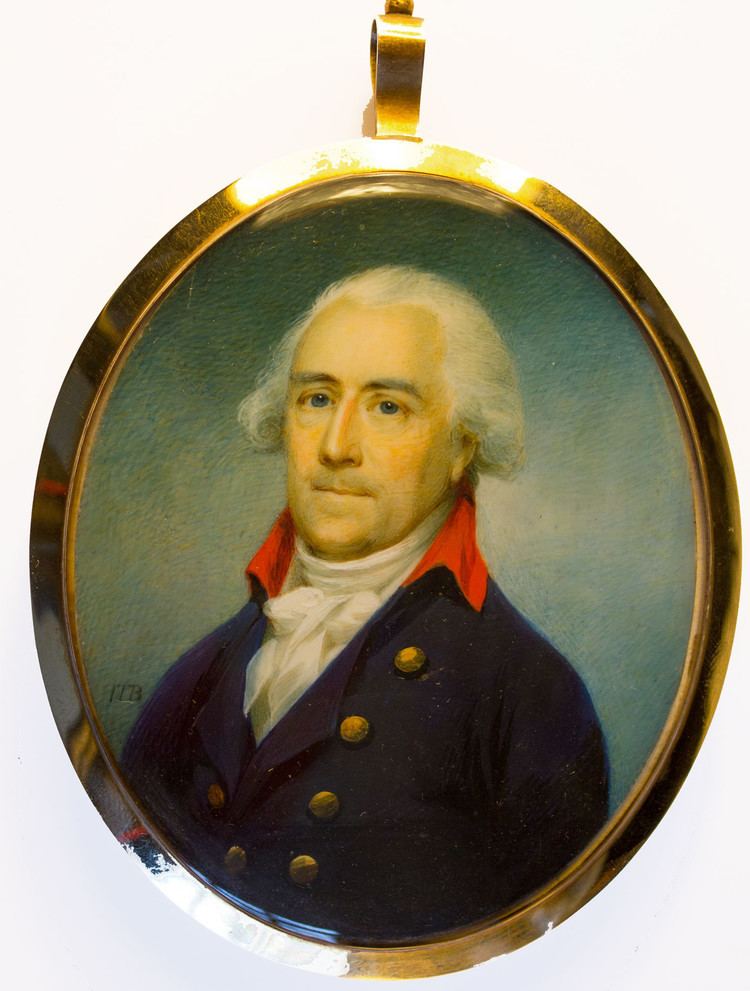Name Hercules Ross Died December 25, 1816 | Children Horatio Ross | |
 | ||
Fullerton hercules ross
Hercules Ross (1745 – December 25, 1816) was a Scottish merchant, who made a fortune in Jamaica, became an intimate friend of Horatio Nelson and figured prominently, if briefly, in the campaign for the abolition of the slave trade. Fiona Scharlau characterises Ross as 'a supreme example of the poor boy who worked hard in a foreign country, creating a life of opportunities that lead to fulfillment of the rags-to-riches dream of the sojourner.'
Contents
- Fullerton hercules ross
- Origins
- Career in the West Indies
- Return to Scotland
- Evidence against the slave trade
- Personal and family life
- References

Origins
He was the ninth son of John Ross (fifth son to a second wife, Elizabeth Fullarton), an excise officer in Port Glasgow of narrow means and a probable descendant (via the Rosses of Kirkland and Tartraven) from Ninian Ross, 3rd Lord Ross.
Career in the West Indies
In 1761 he travelled to Jamaica, where he established himself successfully as a trader, naval prize agent and privateer shipowner and made the acquaintance of Nelson. He acquired a Jamaican mistress, Elizabeth Foord, a quadroon slave whom he later freed and by whom he had several children. One of their sons, Daniel Ross (1780-1849), later became a leading marine surveyor with the Bombay Marine, a Fellow of the Royal Society and President of the Bombay Geographical Society.
Return to Scotland
In 1782, with his fortune made, Ross returned to Scotland, leaving behind Elizabeth Foord, who had been left with sufficient funds to open what became a prosperous boarding house. Upon his return he was elected an Honorary Burgess of Glasgow and purchased an estate at Rossie, near Montrose, on which he later built a large house, Rossie Castle. In 1784, he married Henrietta Parish, the daughter of John Parish, a banker with extensive business interests in Hamburg.
Evidence against the slave trade
In 1790, Ross embarked on a correspondence with William Wilberforce, which led to his giving evidence before the Select Committee of the House of Commons in support of the abolition of the slave trade. Thomas Clarkson ended his History of the Rise, Progress and Accomplishment of the Abolition of the African Slave-Trade by the British Parliament in this manner:
"Having now mentioned the principal facts contained in the evidence offered to Parliament by the petitioners of Great Britain, in behalf of the abolition of the slave trade, we cannot close this compilation better than in the words of Mr Hercules Ross: he says, “finally, as the result of his observations and most serious reflection, he hesitates not to say, that the trade for slaves ought to be abolished, not only as contrary to sound policy, but to the laws of God and nature; and were it possible, by the present inquiry, to convey a just knowledge of the extensive misery it occasions, every Kingdom of Europe must unite in calling on their legislatures to abolish the human traffic…”
The evidence of Ross, as a former member of the planter society whose basis he now condemned, was considered of particular benefit and he was in consequence made an honorary and corresponding member of the Society for the Abolition of the Slave Trade.
Personal and family life
Ross unsurprisingly found that he was no longer persona grata with a number of acquaintances from his former Kingston days, but he no doubt drew consolation from his continuing friendship with Lord Nelson, who stood godfather to his son Horatio. Horatio (1801-1886) subsequently became a celebrated sportsman, being the best rifle shot of his day, and a pioneer photographer.
Hercules Ross died on 25 December 1816, his wife having died in 1811 at the age of 43. His estate was inherited by his 15-year-old son Horatio, who was able to use the wealth accumulated by his father to have a prominent career.
